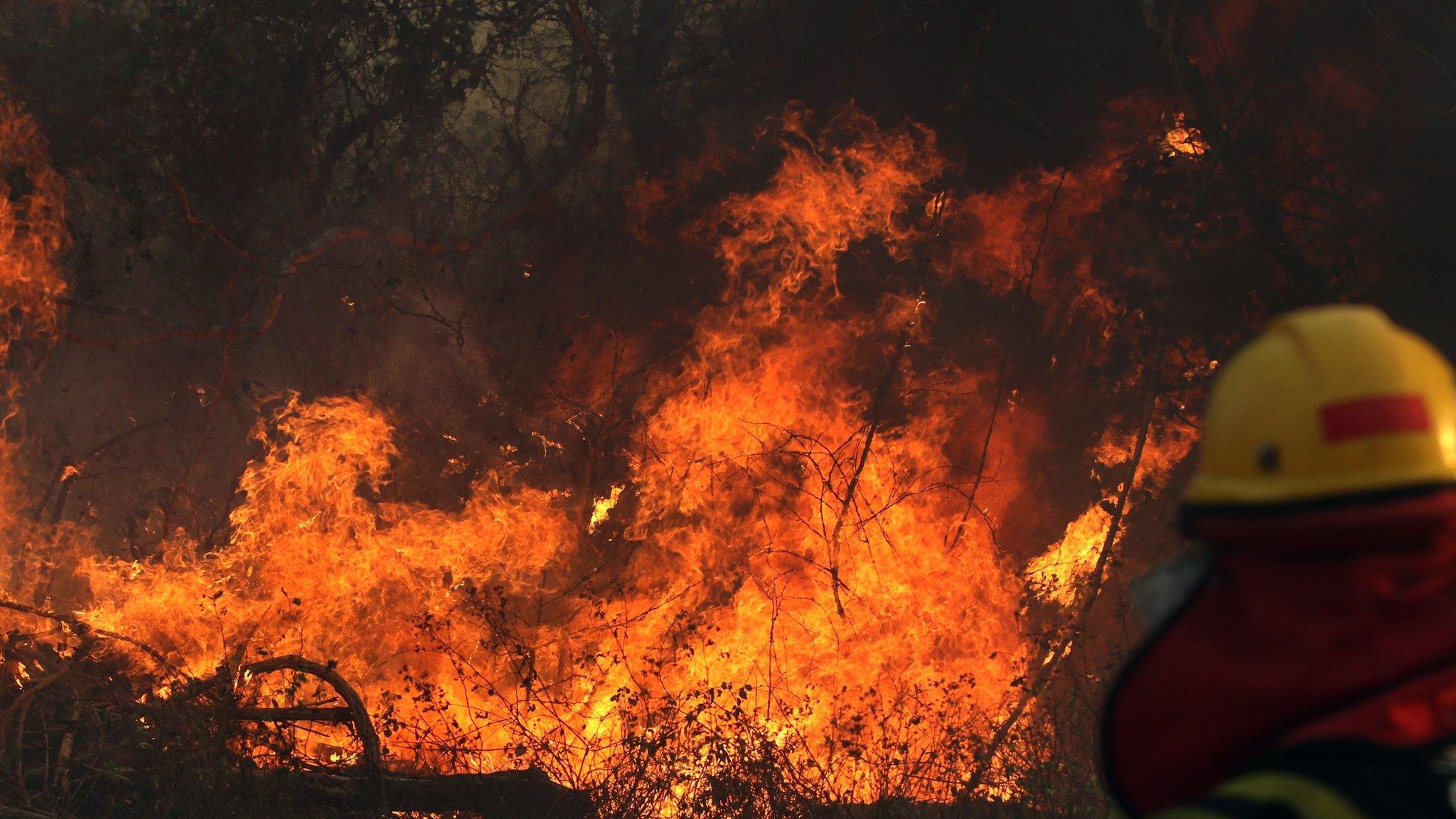What about the animals caught in the Amazon rainforest fires?
- Published
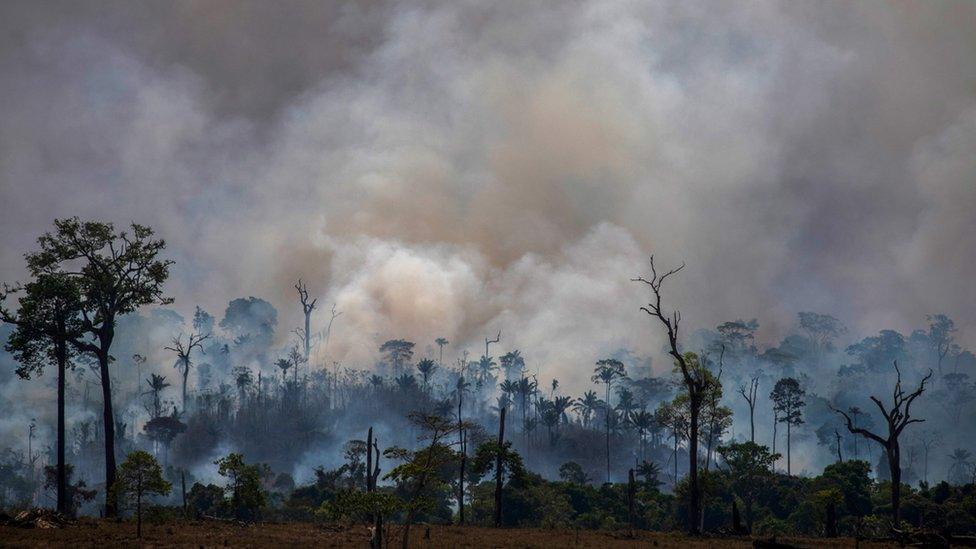
It's believed about three million different species of plant and animal - one in 10 of all the species in the world - live in the Amazon.
This has been the worst year for Amazon fires since 2010.
At the time of writing, Brazil's space agency Inpe reports that there have been almost 85,000 fires in the rainforest so far.
So what does this mean for the many animals who call the Amazon home?

Some animals may be able to escape. Large mammals, such as jaguars, stand the best chance of getting away because they are able to run fast enough to get away from the fire in time.
But many other animals will be killed almost straight away.
Dr Claudio Sillero, professor of conservation biology at the University of Oxford, tells BBC News that he's particularly concerned about the smaller creatures in the forest: "They don't stand a hope in hell."
"Different groups of animals will fare differently," he says. "But we really need to worry [about] amphibians, reptiles and invertebrates. They live in microhabitats, and if these microhabitats get hit by fire then they will disappear completely, and these animals will die."
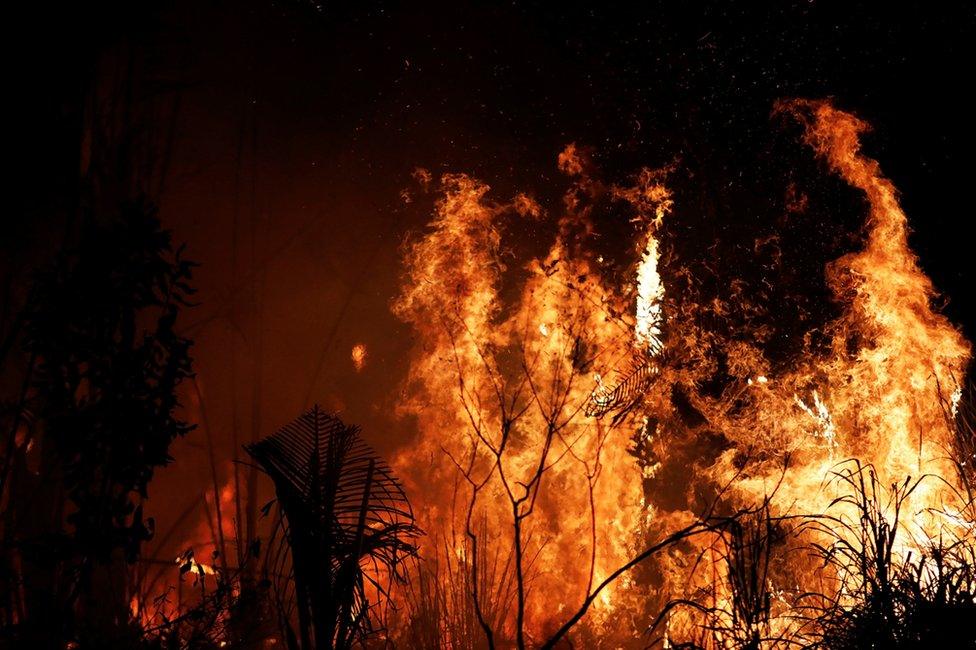
Their offspring are at risk too: "Their eggs also need to be kept damp - but [in fire] the eggs will be quickly cooked."
This, he adds, could cause some species to go extinct.
Then there are the Amazon's many small and slow mammals, such as the sloth. Dr Sillero says these animals "tend to panic in the presence of fire, and are more likely to suffer direct mortalities".
Birds face similar risks, he adds. While individual birds may be able to fly away and find safety, to do so they will need to abandon their chicks and eggs.
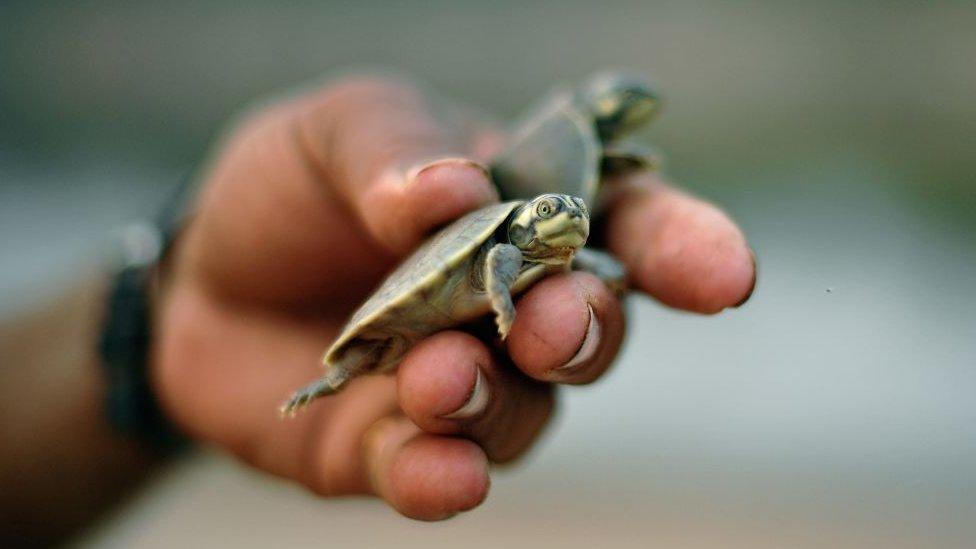
Reptiles in the Amazon need their eggs to stay damp
Paul Rosolie, an American author and conservationist, has seen this first-hand. Last week, he posted footage on Twitter that he had taken of fires in the Amazon while working in the forest in July.
"What's horrible is, and people don't realise, that all these animals are being cooked alive," he tells BBC News. "Baby birds in their nests, snakes, frogs... the monkeys go running for it, but this is the only place these animals have to live."
Escape first, survive later
Fleeing the fire is the first step - and as Dr Alex Lees from Manchester Metropolitan University tells BBC News, these animals' chances of survival remain bleak.
Straight after a fire, he says, "once the area's burned, it's useless for many species".
"It's not like there's necessarily lots of spare space," he says. "Most areas are already at carrying [full] capacity, so they'll need to displace another individual of the same species from their own territory.
"That's the major problem here - they can't go somewhere else because those areas are occupied, and they'd be waiting around for a new territory to open up. But they can't re-use their old areas that have been burned."

Slower mammals in the Amazon, like sloths, are far less likely to escape the fires
When fires rip through a rainforest like the Amazon, they burn down so many trees that there are holes in the forest's canopy. This means that the environment beneath, which is usually dark and humid, is exposed to the harsh sunlight, and can dry out very quickly. It is then repopulated by new species that usually live on the naturally dry areas on the edge of the forest.
This is bad news for animals that rely on the forest's humid, moist environment. Dr Lees, who specialises in bird conservation, gives the example of insectivorous birds who need the ground to be soft and damp in order to be able to stealthily hunt for food. Dry, crunchy leaves on the ground make this impossible for them.
He adds that these species are unlikely to be able to return to their home "for decades - probably far in excess of the single life expectancy of any given creature".
Long-term devastation
As well as immediately killing and displacing birds, insects and land mammals, this habitat change will also eventually hit aquatic species, such as the Amazon river dolphin or the rainforest's many different fish.
Even though these animals are able to avoid the fires by seeking refuge underwater at first, Dr Mark Bowler, an ecologist at the University of Suffolk, says the rivers and lakes they live in will be altered.
"If you burn parts of the forest in order to build a cattle ranch, then aquatic habitats are going to be affected as well," he tells BBC News. "The fish populations and the ecology of the river will change, and that will [also] affect larger animals like the giant otter."
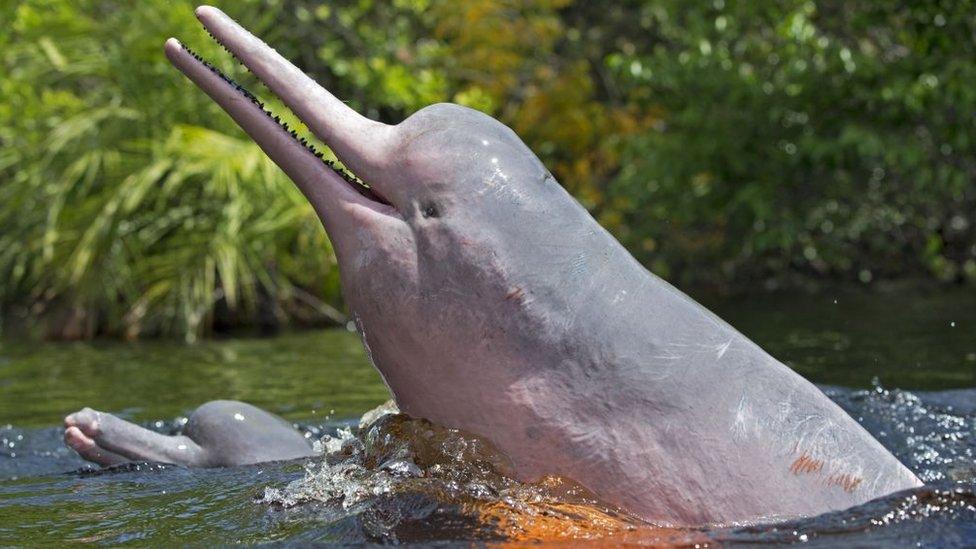
Aquatic animals, such as the Amazon river dolphin, will find their habitat changing too
Many forest-dependent humans will lose their livelihoods as a result of the fires, too.
Dr Rachel Carmenta, an environmental scientist at the University of Cambridge who works with the Amazon's indigenous and mixed-descent communities, tells BBC News that the fires are "a humanitarian problem as well".
Many of the animals hunted by these communities, including tortoises and capybaras, are slow-moving and therefore are likely to have died in the fires, she says.
Trying to hunt the few remaining animals is almost impossible, as the ground is too noisy for hunters to quietly cross the forest floor. On top of this, the plants they use to build homes and produce medicines would have also been charred.
"It's extremely upsetting... to see this kind of devastation" - the BBC's Will Grant flew over northern Rondonia state
"It's not only about those immediate losses of flora and fauna," she adds, "but also the relationships, the identities, the attachments that people have to their homes and to their landscapes, which are eroded and become unrecognisable as fires pass through."
Faced with displacement and starvation, many people's lives are at risk, Dr Carmenta warns.
"In the long-run, I don't think that's too strong to say."
- Published28 August 2019
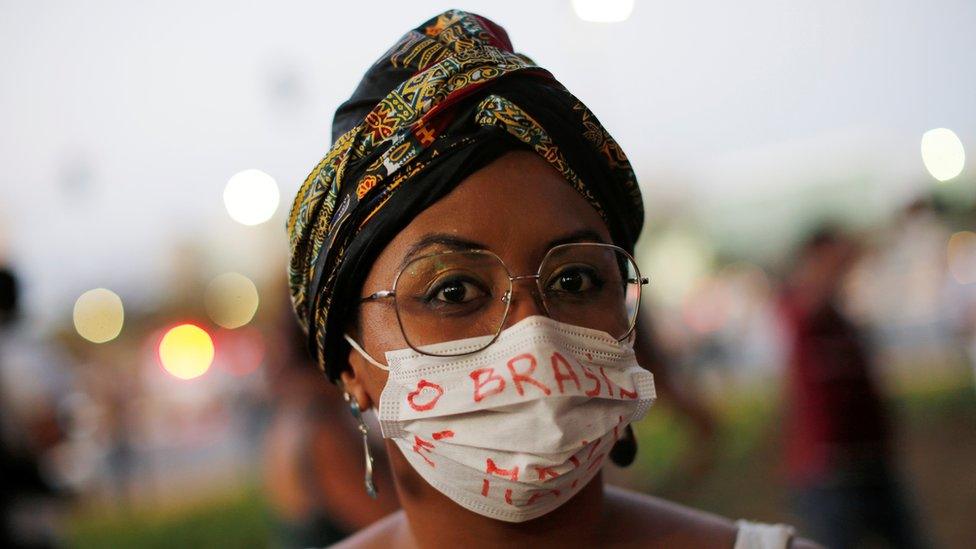
- Published30 August 2019

- Published26 August 2019
